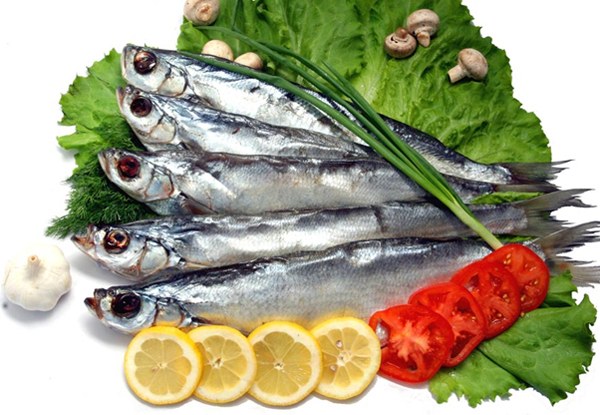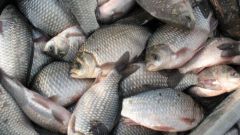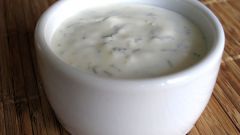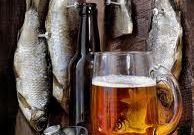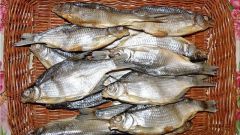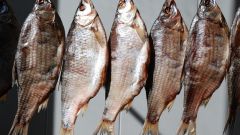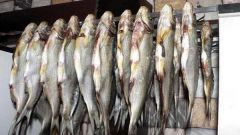Don't worry about the fact that chehon listed in the Red book. In some areas its practiced commercial breeding. Because of this you may purchase sabrefish in the store and calmly amuse your taste buds a variety of dishes from this wonderful fish. Sabrefish, like fish or Kutum ordinary carp, refers to a large family of carp. Gourmets assert that the fishes of this family are especially good in salt form.
Before you begin cooking sabrefish, you need to choose a method. If we talk about salting, there are two methods: dry and wet. They differ from each other by the fact that the dry method uses ordinary salt, and wet - a specially prepared salt solution.
Very important to know how to determine the readiness of fish. This can be done by focusing on eye color and the density of the carcass. It is believed that chehon is ready, if her eyes gained a reddish tint, and the back has become quite flexible and dense. Another sign of preparedness may be the lack of release of juice from fish, but it is increasingly important for small carcasses Sichel.
When you are convinced that chehon had a good gasolinas, you can proceed to the next stage - soaking. This is necessary in order to save fish carcasses from excess salt. There is nothing complicated, just put the fish in cold water for a few hours. Gourmets claim that the optimum time of soaking depends on the duration of salting. For example, if the carcass was SOLIRIS four days, they should be placed in water for four hours. After the process of soaking is complete, put chehon on paper towels and let them dry. That's all, the fish is ready to eat. Now you can go directly to the meal, itself ones amazing taste salty Sichel.
For pickling 1 kg sabrefish you will need:
- 1 kg of salt;
- 1 tablespoon of sugar;
- 3 liters of water.
Prepare a brine of water, sugar and salt, put the washed sabrefish, close the container or put oppression. Usually the fish is ready to eat in a week.
Before you begin cooking sabrefish, you need to choose a method. If we talk about salting, there are two methods: dry and wet. They differ from each other by the fact that the dry method uses ordinary salt, and wet - a specially prepared salt solution.
How to pickle chehon dry method
Most often, the sabrefish is a small fish, and quite bony. That is why it is often consumed in pickled or dried form.First, you need to prepare a suitable size container. Better if it is not too high, but with a wide bottom. Now fill the bottom of the tank with salt, the layer thickness should be approximately one centimeter. Now we need to get carcasses Sichel. They need a good rinse under running water. Not in a hurry to put fish into the tank, after all, the carcass must not be eaten raw, so first remove the excess moisture with paper towels. Now you can put chehon in a container. Fish should be placed quite close to each other, and their bellies should always be directed upwards. Don't forget that on top of the fish also need a good salt. Experienced hostess recommended to use about 150 grams of salt per kilogram Sichel.
Not too large of a carcass sabrefish for pickling, you can not gut. This will allow the fish to soak in better, and therefore make it more juicy and flavorful.If there is a need to put chehon in several layers, then do not forget each of them is to pour salt, and in this case the carcass should be laid as tightly as possible, otherwise the whole point will be on the bottom of the tank. During pickling, sabrefish is very important to follow one simple rule: large carcasses should be placed at the bottom of the tank, and small on top. So the fish will be easier to eat, because small carcasses should be ready much faster than large ones. On average, salting small carcass takes about four days, and the big ten.
Very important to know how to determine the readiness of fish. This can be done by focusing on eye color and the density of the carcass. It is believed that chehon is ready, if her eyes gained a reddish tint, and the back has become quite flexible and dense. Another sign of preparedness may be the lack of release of juice from fish, but it is increasingly important for small carcasses Sichel.
When you are convinced that chehon had a good gasolinas, you can proceed to the next stage - soaking. This is necessary in order to save fish carcasses from excess salt. There is nothing complicated, just put the fish in cold water for a few hours. Gourmets claim that the optimum time of soaking depends on the duration of salting. For example, if the carcass was SOLIRIS four days, they should be placed in water for four hours. After the process of soaking is complete, put chehon on paper towels and let them dry. That's all, the fish is ready to eat. Now you can go directly to the meal, itself ones amazing taste salty Sichel.
How to pickle chehon in a saline solution
For pickling 1 kg sabrefish you will need:
- 1 kg of salt;
- 1 tablespoon of sugar;
- 3 liters of water.
Prepare a brine of water, sugar and salt, put the washed sabrefish, close the container or put oppression. Usually the fish is ready to eat in a week.
